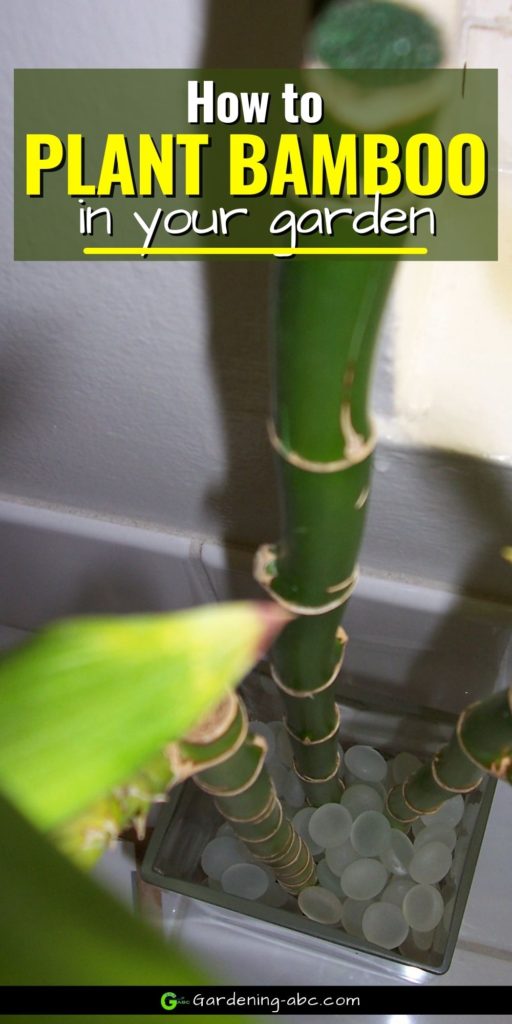We use affiliate links to run our site. When you buy through links on our site, we may earn an affiliate commission, without any added cost to you. Learn more
In this post, we will discuss bamboo planting. its propagation, planting process and timing, and also what to grow with bamboo plants. We have a detailed article on growing and taking care of a bamboo plant. Check that out for more information.
How Does A Bamboo Plant Propagate:
As bamboo flowers and seeds are very scarce it is not suitable to propagate bamboos through seeds. Due to this reason, bamboo plants are generally propagated in mainly two ways:
- Through root/rhizome cuttings, and
- Through transplants
If you are propagating through rhizomes, before planting, make sure some leafy shoots are attached to the rhizome. This increases your success rate with bamboo plants.
For propagating through transplant, harvest your transplants from the established bamboo stalks using the proper tools. Just keep in mind, it can be labor-intensive.
For running bamboos, use a sharpened shovel and a pair of hand pruners, dig and separate a clump that has white roots, a green top, and several joints on the rhizomes.
Keep the rootball moist and replant as soon as possible. Do not leave plants lying horizontal for more than a few minutes. This will cause injury to the transplant.
When to Plant Bamboos:
The best time to plant a bamboo plant will vary depending on the area you live in.
Planting in Colder Climates:
Initially, after planting, bamboos can not withstand extreme cold. So, if you live in a cold climate, the time for planting bamboos is in the springs. During spring, the frost will be over and you can work on the soil. It will also give the plant a long time to settle down and develop cold-hardiness.
Even if you cannot plant bamboos in the spring, make sure to plant at least 3-4 months prior to frost date. Always add a layer of thick mulch to protect the plant in the first winter.
Planting in Warmer Climates:
If you live in a hot climate early spring or late fall are the best times for planting bamboo trees. This is the time when the weather remains milder and is best suitable for the plants to get settle down before the sun starts beating down.
Also, use protective clothing to protect your plants from the scorching sun especially in the first year.
Ideal Soil For Growing Bamboos:
Bamboos grow best in rich, moist, well-drained soils. The ideal soil density should be light to moderate. For growing bamboos in containers prepare your ideal soil by adding perlite, coco coir, and compost in a 1:1:1 ratio.
If you want to soil instead of coco coir use loamy soil. Using clay soil can cause problems for your plant unless you improve the clay.
The ideal pH range should be between 5.5 to 6.5.
How to Plant Bamboo:
- To plant bamboo rhizomes, first, dig the soil. Make a hole a bit bigger than the size of the rootball so that the rootball can sit inside easily.
- Add a bit of well-rotted compost or manure into the planting hole. It will add organic matter to the soil. and will also improve moisture-holding capacity.
- Now, place the rootball inside the hole in such a way that it remains slightly lower (an inch) than the soil surface.
- Next, fill the hole with soil. Be a bit careful not to damage the rhizomes.
- Once everything is done, water the rhizome and cover it with mulch.
Planting Bamboo in A Pot:
- If you are planting bamboo plants in containers choose a bigger than usual container. Although bamboos can grow in a smaller pot, it will be temporary and you will have to repot it later.
- You can also opt for planting boxes. Try to choose a container that is at least 18×18 inches and 18 inches deep. Bamboo plants love space for their rhizomes and roots to spread.
- Place bamboos at approximately the same soil level as it is in the pot. Now fill up the pot with the soil. Make sure there are no air bubbles in the soil. Keep the soil moist but don’t overwater it.
Spacing Your Bamboo Plants:
While planting bamboos, keep a gap of 5 feet between two bamboos if you plan to form a dense cover. For some species, you may need more space.
For taller bamboo varieties, use some support to hold the plant while planting. Sometimes a strong wind can damage or even uproot the plant; so be careful.
What to grow with Bamboos:
Bamboo plants have a long gestation period (around 5 years). So you can use this time to grow plants in the inter space for the first 3 years. Plants that grow well with bamboos are ginger, chilies, turmeric, some shade-loving plants. You can even grow some medicinal plants along with bamboos.
Like the post? Don’t forget to PIN IT

Amazon and the Amazon logo are trademarks of Amazon.com, Inc, or its affiliates.

Hi there! My name is Prasenjit and I’m an avid gardener and someone who has grown a passion for growing plants. From my hands-on experience, I have learned what works and what doesn’t. Here I share everything I have learned.
